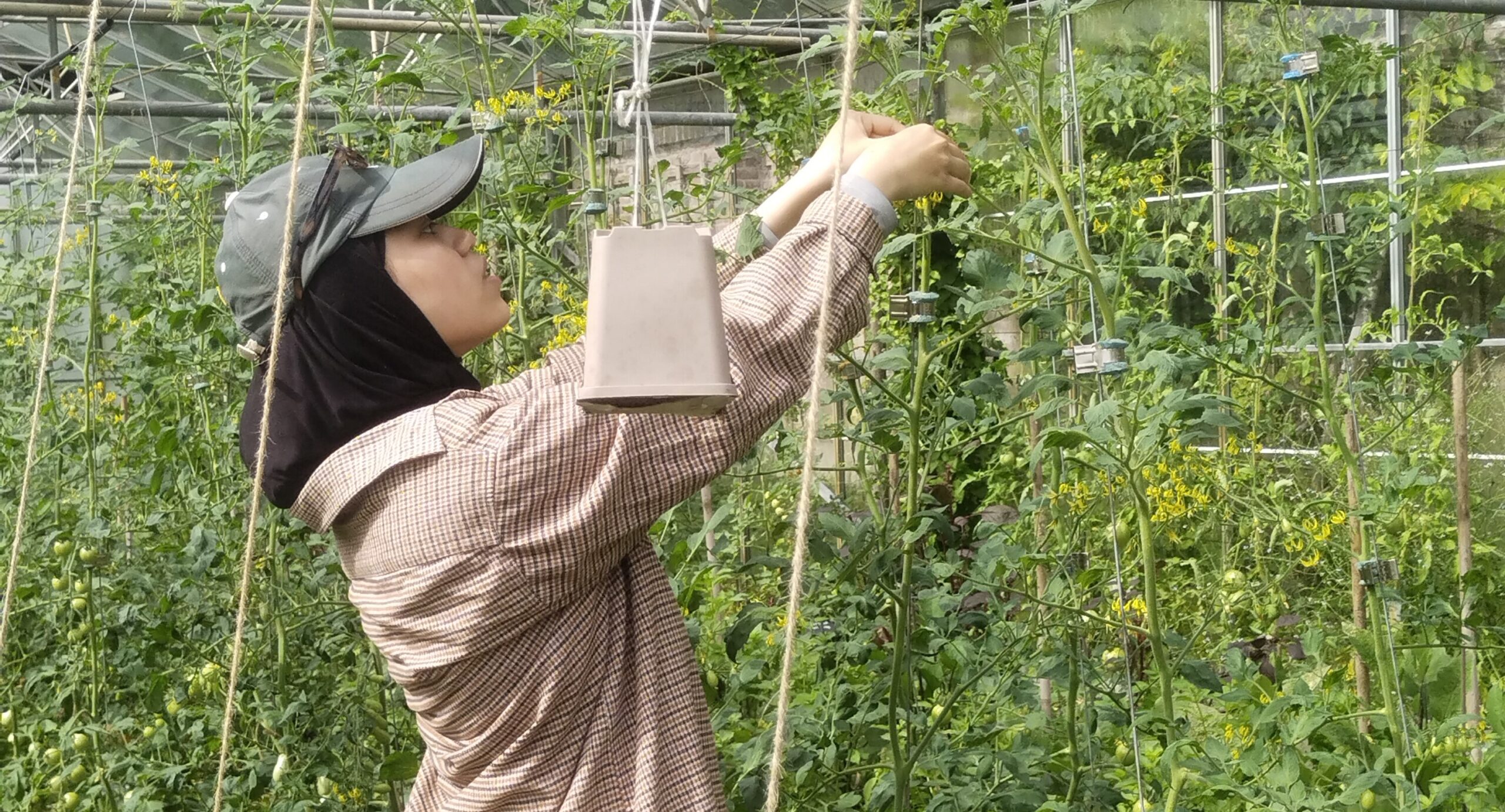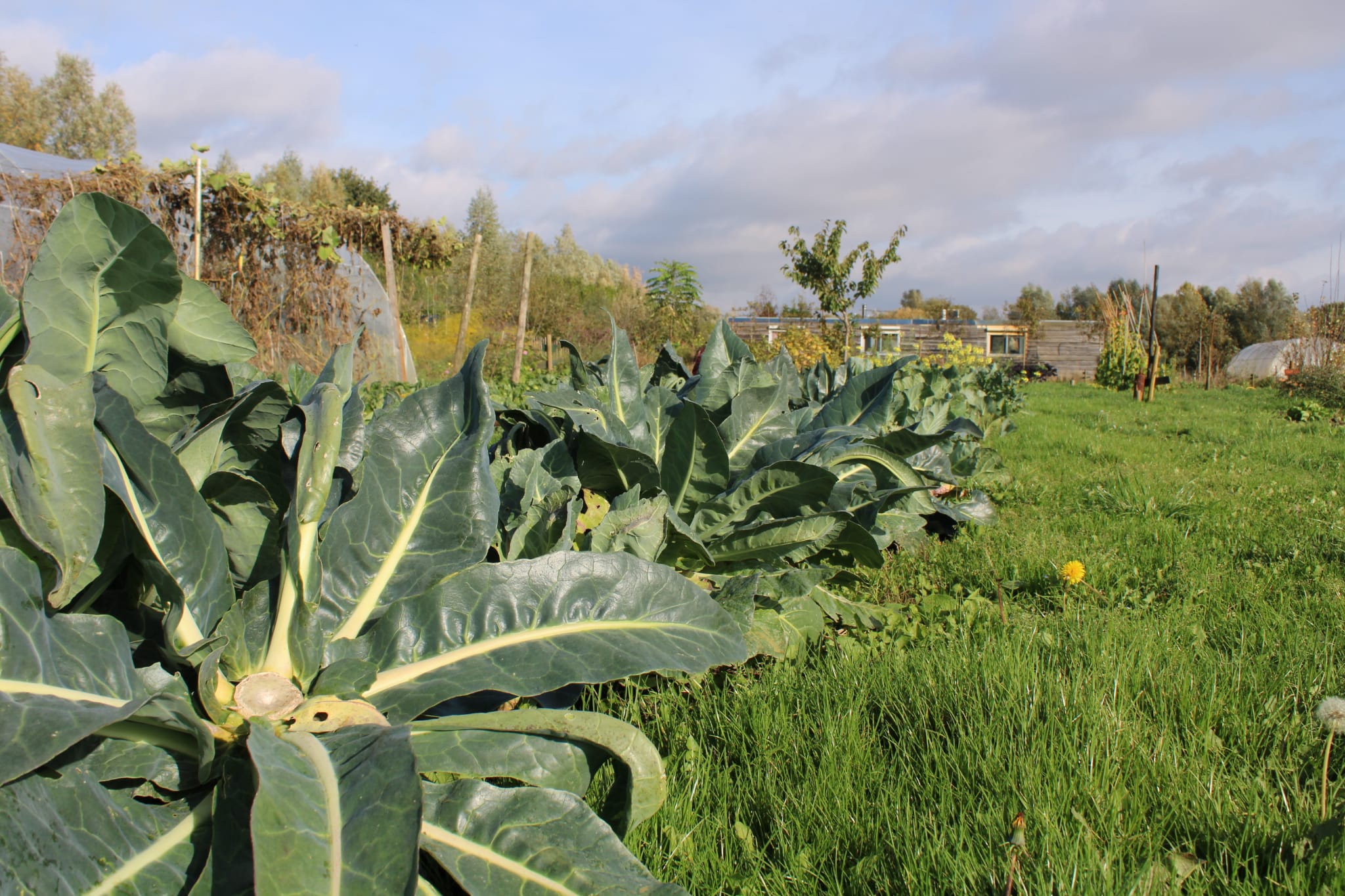Life can be tricky if you have a vegetable garden. I’m against using Roundup, Exirel and Tracer on principle, but sometimes I feel that I’m feeding the local slugs rather than my family. It’s a typical Wageningen dilemma.
Another example of large-scale gardening is the food forest hype.
Isn’t a food forest just an allotment on a larger scale — an XXL vegetable garden with better PR?
Food forests are sprouting up everywhere like organic fungi, often financed via crowdfunding among oat-milk-cappuccino-drinking urban folk hankering for a rural idyll. The idea is great: an edible paradise where nuts, berries and fungi thrive almost effortlessly, a place bursting with biodiversity and free from artificial fertilizers or toxins. Intrinsically appealing initiatives that also help you offset the mortgage on your new second home through crowdfunding.
Food forests get an impressive amount of support from politicians and celebrity chefs, and people in Wageningen seem keen on them too. A project page tells me ‘Food forests fit with a new agricultural system with more diversity. They should have a role alongside other forms of sustainable agriculture.’
But the fundamental question bugging me is whether food forests can ever be more than a fun hobby. When I read the literature, I don’t see any solid scientific studies showing that food forests can generate sufficient yields to give you a decent income. Quite apart from the question of how to harvest, package and sell the food (getting the blackberries off 40 shrubs in a dense hazelnut forest seems quite a challenge for any machinery).
Isn’t a food forest essentially just an allotment on a larger scale — an XXL vegetable garden with better PR? If the main aim is biodiversity and CO2 sequestration, fine. Go ahead with your food forests, but put them on land that isn’t suitable for farming. Don’t use the ultra-expensive Dutch fields, which are in short supply anyway and where the main challenge is to get the current farmers to switch to less intensive practices.
As far as I’m concerned, until proven otherwise, a food forest isn’t real agriculture: it’s a land-intensive hobby for people with a lot of space and idealism. Nothing wrong with that, but what is wrong is presenting the food forest as a solution for feeding the world without any proper evidence.
Guido Camps (40) is a vet and researcher at Human Nutrition and OnePlanet. He enjoys baking, beekeeping and unusual animals.
Pays off in 70 years?
Following some detective work, it turns out that Stijn Heijs, the chair of the Dutch Food Forest Foundation, has data that can be used to make a comparison. He says, ‘The average investment in a food forest is about 20,000 euros per hectare: 8,000 in plant material, 8,000 for the design and 4,000 for permits and working the soil. After planting, the forest takes ten years to mature so you hardly have any income until then, but you don’t have costs either. After that, the estimated revenue is 12,000 euros per hectare per year. That is about 20 per cent more than the revenue per hectare of conventional farmland, which is about 10,000 euros.’
Based on these figures, a food forest farmer would have no revenue for ten years but would have invested 20,000 euros and lost out on 10,000 euros per year that they could have earned with conventional farming. This difference of 120,000 euros would be wiped out by the higher revenues in a mere 60 years. So according to this data the food forest pays off after 70 years!

 Photo Guy Ackermans
Photo Guy Ackermans 

